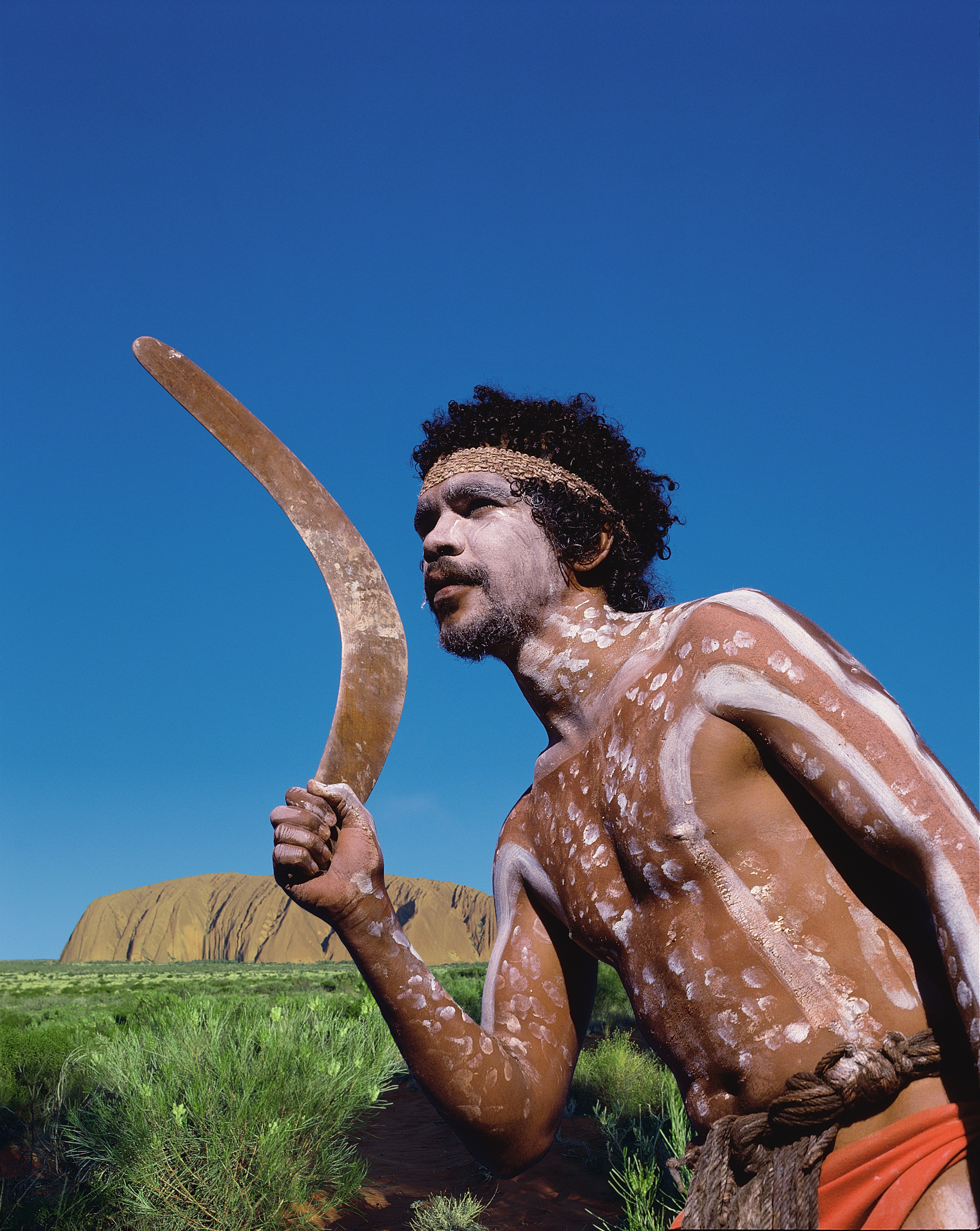Boomerang is a curved, flat implement that is thrown as a weapon or for sport. Most boomerangs are made of wood or plastic. Most boomerangs measure from 12 to 36 inches (30 to 90 centimeters) long and 1/2 to 5 inches (1.3 to 13 centimeters) wide. Their weight usually ranges from 1 to 18 ounces (30 to 500 grams). Most boomerangs have a bend, called the elbow, near the middle that forms two wings shaped like airplane wings. Boomerangs used for sport typically have two, three, or four wings.

Boomerangs are commonly associated with the Aboriginal peoples of Australia , the continent’s original people, who have used them for hunting and many other specialized tasks. However, scientists believe boomerangs were developed independently by a number of prehistoric hunting peoples. Ancient boomerangs have been found in many parts of the world.
Kinds of boomerangs.
There are two kinds of boomerangs, returning and nonreturning. Returning boomerangs are the best-known type. When a returning boomerang is thrown correctly, the thrower can catch it without moving from the starting point. Different designs of returning boomerangs are made for right- and left-handed throwers. Returning boomerangs are usually smaller than nonreturning types.
Returning boomerangs are used mainly for the sport of boomerang throwing. Throwers can take part in competitions throughout the world. There are several types of events that test a competitor’s throwing distance, accuracy of return, and catching ability.


Nonreturning boomerangs have played an important part in Australia’s Aboriginal cultures through the centuries. A spinning boomerang hits a target with more force than a thrown rock or stick. For this reason, nonreturning boomerangs are useful weapons for hunting and fighting. The Aboriginal peoples of Australia have also used them as tools for skinning animals and digging holes, and as trading objects. Some of the people decorate boomerangs with carved or painted designs that are related to their legends and traditions. They treat these decorated boomerangs with respect and use them in religious ceremonies. Aboriginal people also clap boomerangs together to provide rhythm for songs and chants.
How a boomerang flies.
A boomerang’s flight depends on its shape and size and how it is thrown. Winds also influence its flight. Each wing of a boomerang has a flat bottom and a curved top. The leading edge of each wing is blunt, and the trailing edge is sharp. As the boomerang spins wing-over-wing in flight, air flows faster along the curved top of the wing than along the bottom. The difference in air speed causes a difference in air pressure above and below the wings, which creates a lifting force that helps keep the boomerang aloft. See Aerodynamics (Principles of aerodynamics) .
Returning boomerangs are lighter and more curved than nonreturning boomerangs. These features, when combined with highly efficient wings that spin end-over-end in flight, enable the boomerang to travel in a curved, circular path and return to the thrower.
A good throw can make a returning boomerang travel for more than 550 feet (150 meters) before it begins to return. Nonreturning boomerangs can travel for about 650 feet (200 meters).
